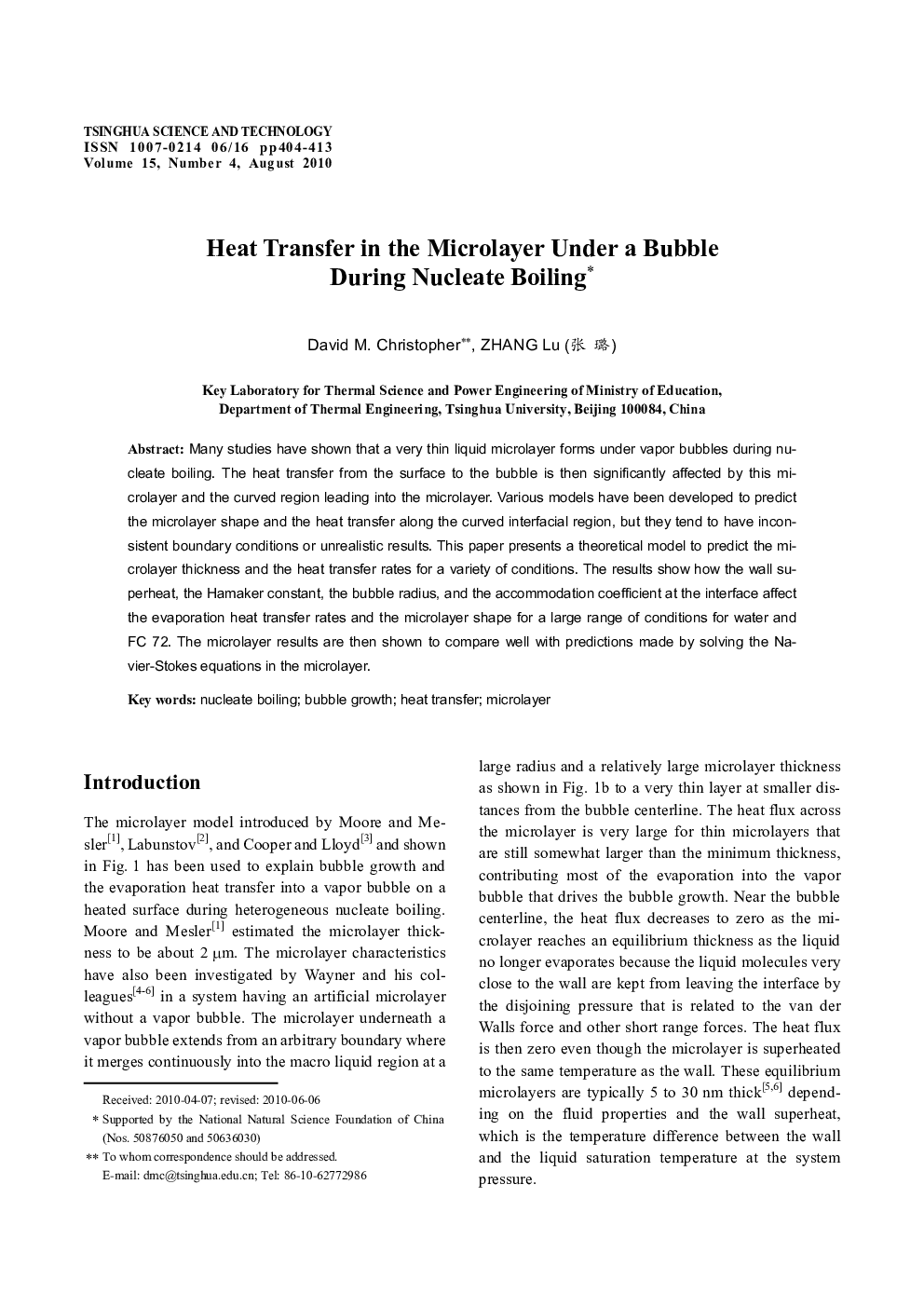| Article ID | Journal | Published Year | Pages | File Type |
|---|---|---|---|---|
| 865378 | Tsinghua Science & Technology | 2010 | 10 Pages |
Abstract
Many studies have shown that a very thin liquid microlayer forms under vapor bubbles during nucleate boiling. The heat transfer from the surface to the bubble is then significantly affected by this microlayer and the curved region leading into the microlayer. Various models have been developed to predict the microlayer shape and the heat transfer along the curved interfacial region, but they tend to have inconsistent boundary conditions or unrealistic results. This paper presents a theoretical model to predict the microlayer thickness and the heat transfer rates for a variety of conditions. The results show how the wall superheat, the Hamaker constant, the bubble radius, and the accommodation coefficient at the interface affect the evaporation heat transfer rates and the microlayer shape for a large range of conditions for water and FC 72. The microlayer results are then shown to compare well with predictions made by solving the Navier-Stokes equations in the microlayer.
Related Topics
Physical Sciences and Engineering
Engineering
Engineering (General)
Authors
David M. Christopher, Lu (å¼ ç),
